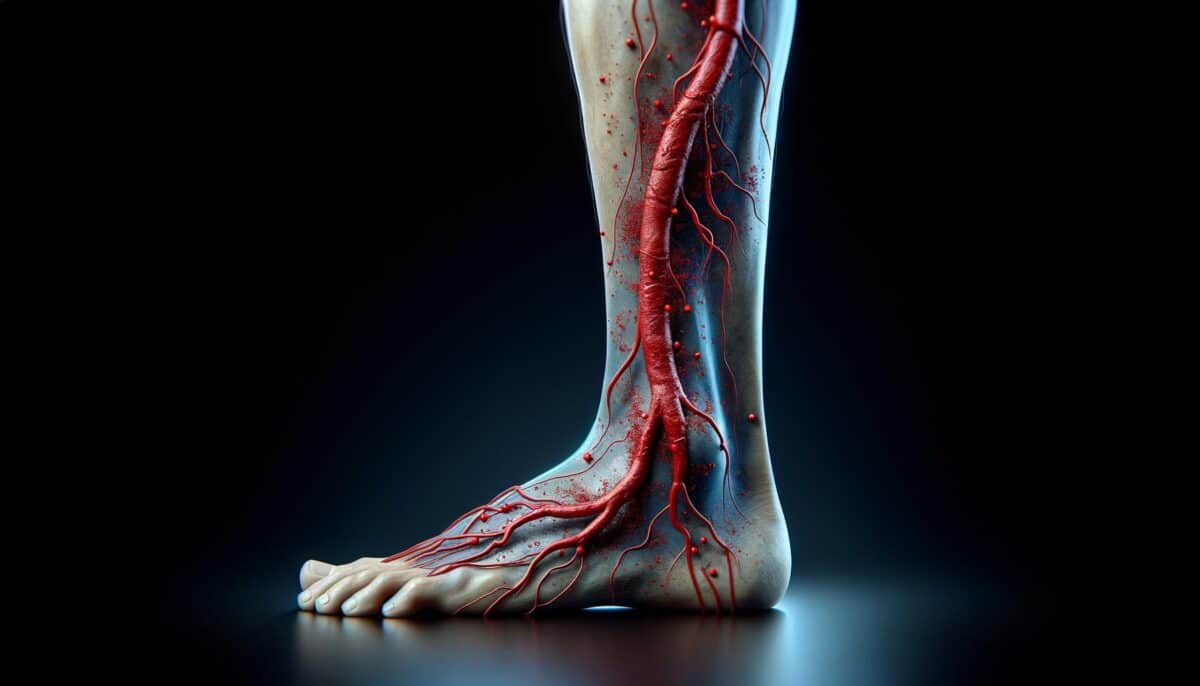What is a Leg Blood Clot?
A leg blood clot, typically referred to as deep vein thrombosis (DVT), occurs when a blood clot forms in one of the deep veins in your body, commonly in the legs. This condition can be dangerous because the blood clots in your veins can break loose, travel through your bloodstream, and lodge in your lungs, a condition known as pulmonary embolism (PE). A PE can be life-threatening if not treated immediately. Various factors can increase the risk of developing leg blood clots, including prolonged periods of immobility, recent surgery, or a history of blood clots. Understanding the leg blood clot symptoms can help ensure timely medical intervention.
Recognizing Leg Blood Clot Symptoms
Identifying the symptoms of a leg blood clot is crucial to preventing serious complications. Key symptoms to watch for include:
- Swelling in one or both legs, often accompanied by pain or tenderness, especially in the calf area.
- Red or discolored skin on the leg.
- A feeling of warmth in the affected leg.
- Cramping or throbbing in the affected leg, which usually starts in the calf.
It’s important to note that some people with DVT may have no noticeable symptoms. In cases where symptoms are present, they can often be mistaken for other conditions, which makes awareness and timely medical advice crucial if you suspect a clot.
Risk Factors for Developing Leg Blood Clots
Several risk factors contribute to the formation of leg blood clots, some of which can be managed with lifestyle changes. Common risk factors include:
- Being sedentary for extended periods, which can occur during long flights or car journeys.
- Undergoing surgery, particularly surgeries involving the pelvis, hips, or legs.
- Having a family history of DVT or blood clotting disorders.
- Using hormone replacement therapy or certain types of birth control pills.
- Being overweight or obese, which puts increased pressure on the veins in your legs.
Individuals with one or more risk factors should discuss their risk with a healthcare provider, particularly before surgeries or long travels.
Prevention and Management of Leg Blood Clots
Preventing leg blood clots involves addressing the risk factors and implementing healthy habits. Some preventive measures include staying active and moving around every hour during long periods of inactivity, maintaining a healthy weight, and managing chronic conditions like diabetes or high blood pressure effectively. Wearing compression stockings can help improve circulation in the legs, reducing the risk of clot formation. If you’ve been prescribed anticoagulants or blood thinners, it’s crucial to take them as directed by your healthcare provider. Early diagnosis and treatment are pivotal, and imaging tests like ultrasounds are often used to confirm suspicions of DVT.
When to Seek Medical Attention
If you experience symptoms that suggest a leg blood clot, seek medical attention promptly. Conditions like shortness of breath, chest pain, or coughing up blood can indicate that a blood clot has moved to the lungs, requiring immediate emergency care. Regular check-ups and monitoring with a healthcare provider are essential, especially for individuals with a history of DVT or other risk factors. Participating actively in your healthcare can significantly reduce your risk of complications and improve your overall vascular health.
Conclusion
Awareness and understanding of leg blood clot symptoms are fundamental for early detection and prevention of serious complications. By recognizing the signs, managing risk factors, and seeking timely medical advice, individuals can protect themselves from the risks associated with DVT and potential pulmonary embolism. Regular communication with healthcare providers and adherence to prescribed treatments can also play a significant role in maintaining vascular health. For those at higher risk, preventive strategies and lifestyle adjustments can make a significant difference in reducing the likelihood of developing a leg blood clot.
